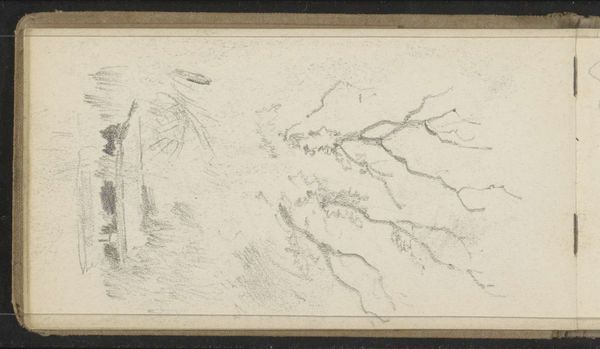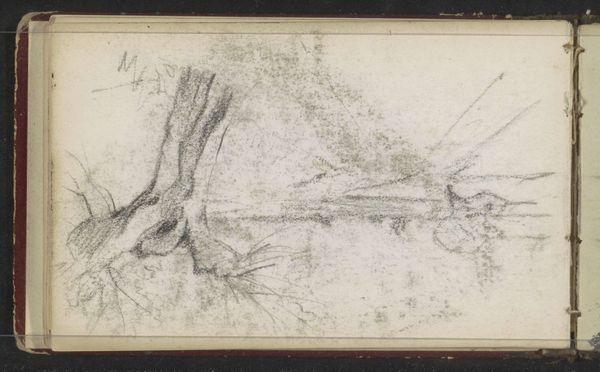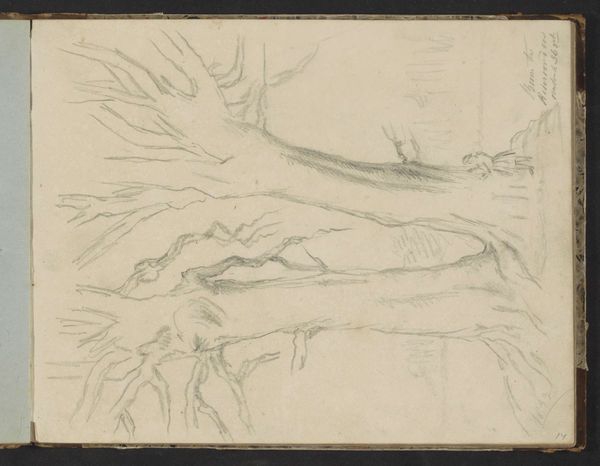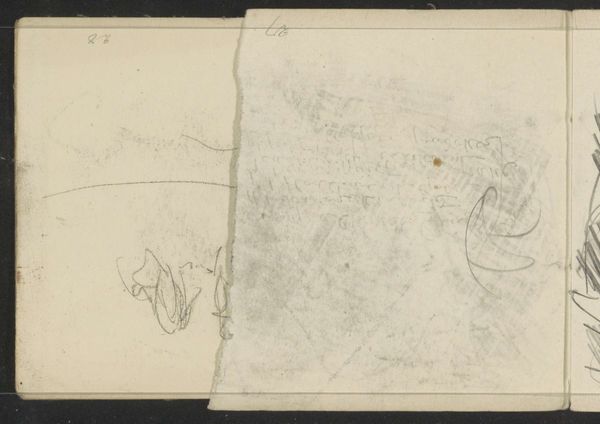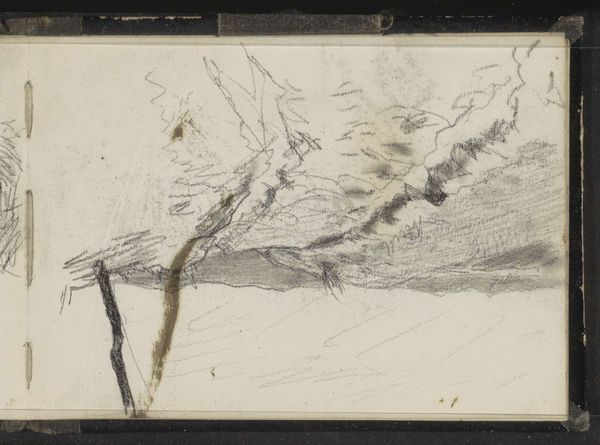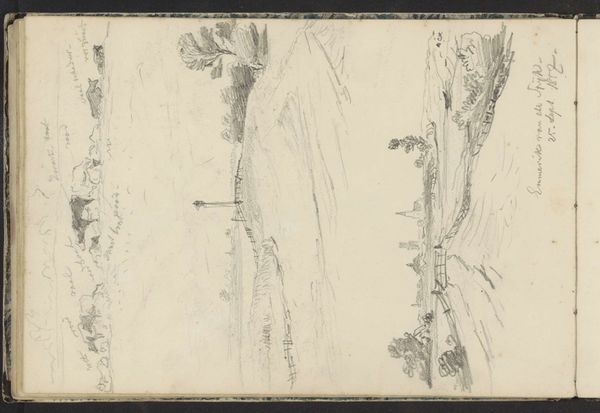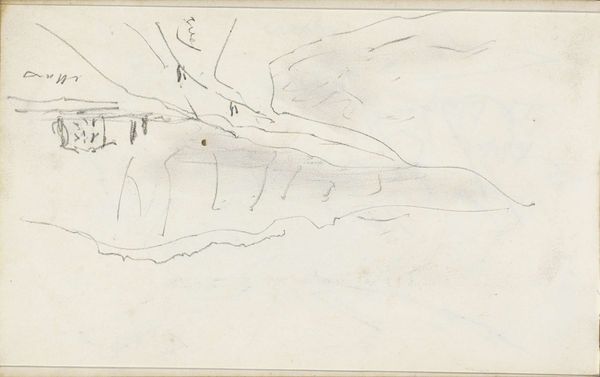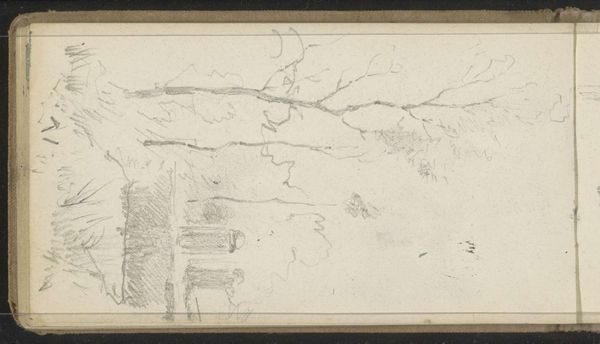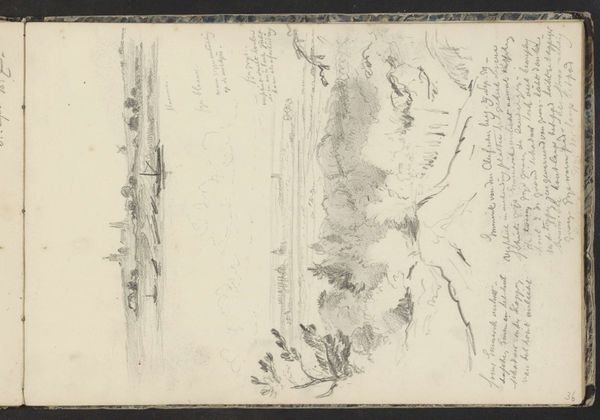
Dimensions: height 104 mm, width 179 mm
Copyright: Rijks Museum: Open Domain
Curator: Let's turn our attention to this landscape drawing by Willem Cornelis Rip, titled "Man op een landweg met bomen", or "Man on a country road with trees," from 1895. It’s a delicate sketch executed in pencil on paper. Editor: Immediately I’m drawn to the textural quality – the roughness of the paper almost feels like it's part of the scene, amplifying this desolate atmosphere in the work. It's like feeling the gritty dust of a country path. Curator: Indeed. Rip was active during a period where Impressionism was shifting how artists engaged with landscapes. Note how he uses short, broken lines to suggest movement and light filtering through the trees. It’s not a photorealistic depiction, but more about capturing the sensory experience of being there. Editor: For me it speaks to a different mode of production. You can see the immediacy in the artist's hand; the sketch appears quite spontaneous and unpremeditated. There is nothing laborious in the crafting, more so about getting the impression immediately in that particular point in time, almost journalistic, capturing that instant sensation, what the path offers to the observer. Curator: Precisely, sketching outdoors, en plein air, allowed artists to record fleeting moments and atmospheric conditions directly. It democratized the making process allowing many people to make landscape sketches of the scenes that were presented before their eyes. How accessible was paper during those times? Were there specific drawing supply workshops during that time that allowed artists of varied social status to get drawing materials? These are interesting sociological perspectives, not only artistic. Editor: Those are relevant questions. Rip's sketch, though seemingly simple, is layered with considerations of the artist's process. It is quite apparent that a whole range of material possibilities arise to interpret this artwork from this point on. Curator: Considering the time and its cultural context helps us recognize this as an artwork reflecting its specific moment, and the artistic shift happening then, with all the challenges of a period in turmoil. Editor: And thinking about materials, production, and social accessibility enriches our experience as a tangible connection to a lived past, providing more questions to be analyzed about this beautiful pencil work. Curator: A fascinating confluence of history, artistic skill and socioeconomic perspectives embedded in what seems a simple sketch. Editor: Exactly. It’s these very elements that transforms the drawing in something of interest, as a product of both labor and a particular historical situation.
Comments
No comments
Be the first to comment and join the conversation on the ultimate creative platform.
